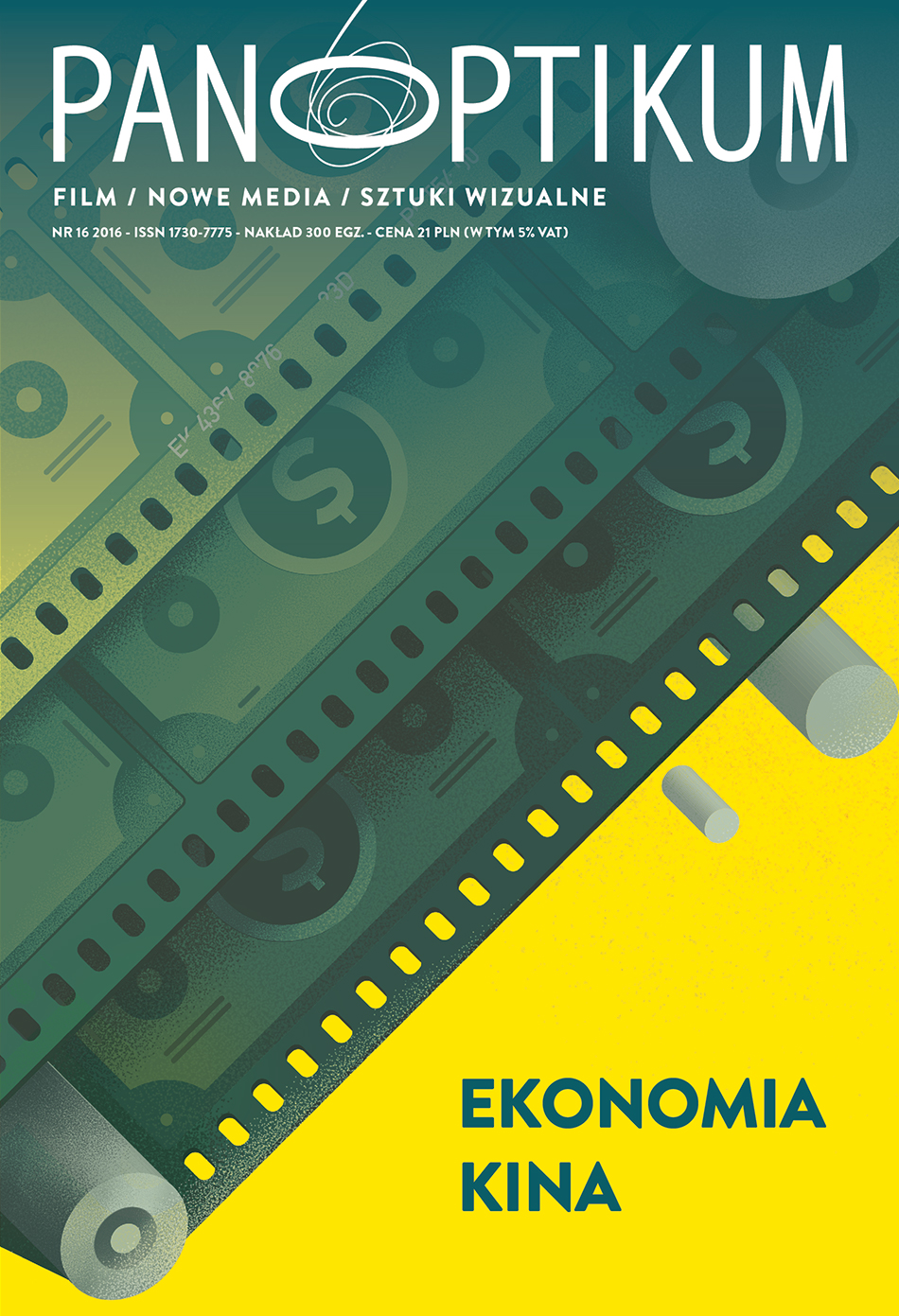"Forget the Film, Watch the Title Credits!". A Case Study from the History of Opening Title Sequence
Abstract
I regard a warning put on the film cans with The man with a golden arm by Otto Premingera (1955), „Projectionists, pull curtain before titles” as a symbolic beginning of a visibility, legibility and individuation of a title sequence. This particular recommendation was to change the movie audience practice and combine cognitive openness with the first metres of a screening film. It set in motion a long-term reflection motivated by different circulations of knowledge and cognitive needs. The promotion of the title sequence translated directly into the bottom-up movement of obtaining a place (and prestige) by a previously anonymous occupational group. At the same time the opening sequence became a centre of an artistic and proto-film expression from a visual culture perspective. A title sequence can be located between iconic message, typography, advertising, packaging, neon sign, vignette and poster. An opening sequence would be then nested in various forms (and media) of the management of human surroundings, in this particular example negotiated thanks to the perceptual activity of the viewer, in the wider meaning – recipient based on different culture competences and in the widest meaning – user. The contemporary direction of participation in an audiovisual culture heritage and commonness of an access to the “primeval movie version” result in a diverse offer of short multi- and post-medial forms and let the intercepted and emancipated title sequence accommodate on a map of ahistorical practices belonging to the remix culture.
Downloads
References
Bogdanowich, P. (1997). Who the Devil Made it. New York: Ballantines Books.
Chapman, J. (2000). Licence to Thrill: A Cultural History of the James Bond Films. Columbia University Press.
Dettke, J. (2015), The Opening Credits as Schriftfilm, [w:] P. Weibel et al. (red.), Typemotion. Type as Image in Motion. Ostfildern: Hatje Cantz Verlag.
Elsaesser, T., Hagener, M. (2015). Teoria filmu. Wprowadzenie przez zmysły (tłum. K. Wojnowski). Kraków: Universitas.
Horak, J. (2014). Anatomy of film design. University Press of Kentucky.
Genette, G. (1992). Palimpsesty. Literatura drugiego stopnia (tłum. A. Milecki), [w:] H. Markiewicz (red.), Współczesna teoria badań literackich za granicą. Antologia. Kraków: Wydawnictwo Literackie, s. 316-369.
Gray, J. (2010). Show Sold Separately. Promos, Spoilers, and Other Media Paratexts. Nowy York, London: University Press.
Gross, R. (2015). The Graphic Art Of Film Title Design Throughout Cinema History, https://designschool.canva.com/blog/film-titles/ (dostęp: 27.11.2016).
Gwóźdź, A. (2008). DVD jako paramedium kina, czyli historia kina po nowemu. Na przykładzie filmów Kazimierza Kutza, [w:] E. Nurczyńska-Fidelska, K. Klejsa (red.), Kino polskie: reinterpretacje.Historia – ideologia – polityka. Kraków: Rabid, s. 489-510.
Gwóźdź, A. (2010). Obok filmu, między mediami, [w:] A. Gwóźdź (red.), Pogranicza audiowizualności. Parateksty kina, telewizji i nowych mediów. Kraków: Universitas.
Hopfinger, M. (1993). W laboratorium sztuki XX wieku. O roli słowa i obrazu. Warszawa: PWN.
King, E. (2004). Taking Credit: Film Title Sequences, 1955-1065. https://www.typotheque.com/articles/taking_credit_film_title_sequences_1955-1965_1_contents (dostęp: 20.06.2016).
Krautkrämer, F. (2010). Poszerzenie strefy granicznej – paratekst w filmie (tłum. E. Fiuk), [w:] A. Gwóźdź (red.), Pogranicza audiowizualności. Parateksty kina, telewizji i nowych mediów. Kraków: Universitas, s. 225-241.
Lessig, L. (2009). Remiks. Aby sztuka i biznes rozkwitały w hybrydowej gospodarce (tłum. R. Próchniak). Warszawa: Wyd. Akademickie i Profesjonalne.
Matamala, A., Orero, P. (2011). Opening Credit Sequences: Audio Describing Films within Films. “International Journal of Translation”, vol. 23, no. 2.
McGilligan, P. (2005). Alfred Hitchcock. Życie w ciemności i w pełnym świetle (tłum. J. Matys, A. i A. Nermer, I. Stąpor). Warszawa: Twój Styl.
Naylor, G. (1988). Bauhaus (tłum. E. Biegańska). Warszawa: Wydawnictwa Artystyczne i Filmowe.
Overy, P. (1979). De stijl (tłum. T. Lechowska), Warszawa: Wydawnictwa Artystyczne i Filmowe.
Re, V. (2016). From Saul Bass to participatory culture: Opening title sequences in contemporary television series. http://www.necsus-ejms.org/saul-bass-participatory-culture-opening-title-sequences-contemporary-tv-series/ (dostęp: 20.10.2016).
Steyerl, H. (2013). W obronie nędznego obrazu (tłum. Ł. Zaremba). „Polska Sztuka Ludowa. Konteksty” nr 31.
Szydłowska, A., Misiak, M. (2015). Paneuropa Kometa Hel. Szkice z historii projektowania literw Polsce. Kraków: Karakter.
Truffaut, F., Scott, H. (2005). Hitchcock Truffaut (tłum. T. Lubelski). Izabelin: Świat Literacki.
Zons, A. (2010). Czas czołówki (tłum. M. Saryusz-Wolska), [w:] A. Gwóźdź (red.), Pogranicza audiowizualności. Parateksty kina, telewizji i nowych mediów. Kraków: Universitas, s. 209-224.

 Academic Scientific Journals
Academic Scientific Journals





